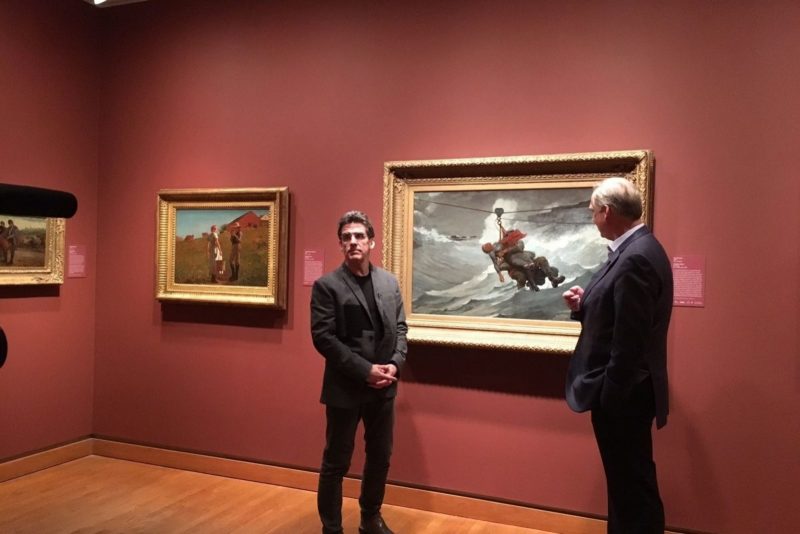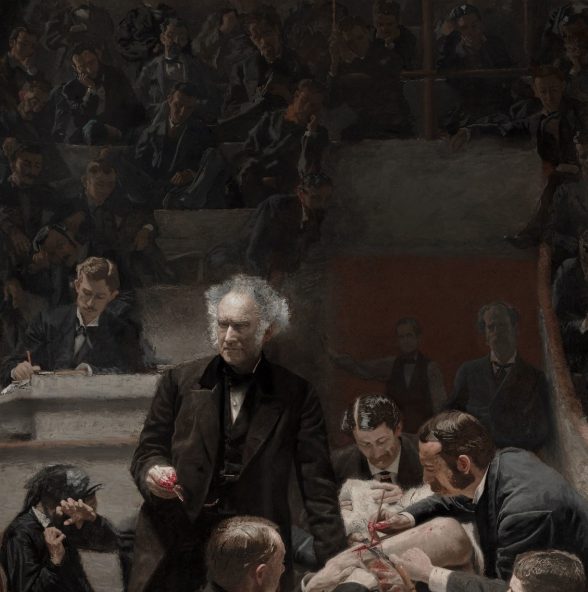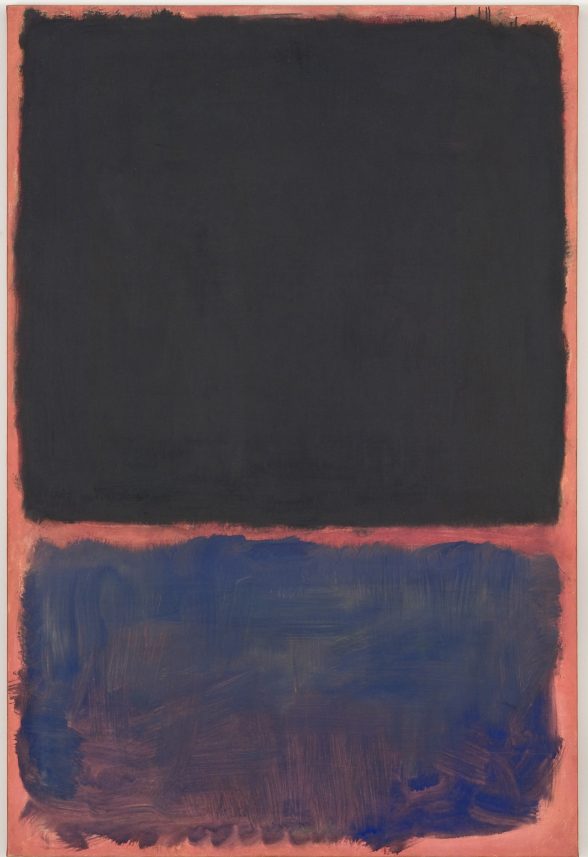Pictures at an Exhibition has had many incarnations since Modest Mussorgsky’s iconic piano work premiered in 1874. A brand new take on the marriage of art and music debuted recently at the Chamber Orchestra of Philadelphia’s final program of the 2017-18 season, the brainchild of composer and the Chamber Orchestra’s maestro, Dirk Brosse, who pinned his new composition to seven American paintings found in the collection of the Philadelphia Museum of Art (PMA).

A collaboration between the Chamber Orchestra and the PMA, Brosse’s Pictures at an Exhibition focuses on several of the most iconic and well-loved works in the museum–Thomas Eakins’ “The Gross Clinic,” Thomas Moran’s “Grand Canyon of the Colorado River,” Edward Hicks’ “The Peaceable Kingdom,” and Winslow Homer’s “The Life Line” are just some of the paintings that inspired Brosse.
In a brief pre-performance talk, Brosse walked the audience through the paintings that inspired each movement like an uncle showing you his vacation pictures. The stillness of the paintings displayed on the screen as the music played allowed the audience’s imagination to roam as they listened. Each of the seven short movements had a clear storyline based on a painting.

A cinematic sensibility
The music paired with Eakins’ “The Gross Clinic” captured a sense of anxiety driven by a sputtering percussion pattern paired with a triangular recorder played by Brosse himself. Being that Brosse is also a film composer, his music to Moran’s epic landscape painting had an evocative quality that makes any great film score striking.

The most intriguing of the seven interpretative movements was the music to the untitled work by Rothko. Brosse used the painting’s bare colors of black and blue behind a red background to create dissonant colors in the orchestra, and with the absence of a clear melodic line. The blue and black colors are separated, with their common thread being the red background. This is also true compositionally as the orchestra is split into two different phrases and their glue is Brosse.
The gulf between paintings and projections
I would have preferred to see the paintings themselves, rather than digital projections of them because the projections seemed lifeless and flat compared to what the real works look like up close and personal. Also, it would have been wonderful if The Chamber Orchestra of Philadelphia had exhibited the paintings before the performance. This would have allowed concert goers to familiarize themselves with the paintings in advance, and form their own expectation of what the music might sound like (and be surprised with the outcome).
The evening’s program, which also included works by Beethoven, Dai Wei (a promising new work by Curtis Institute of Music student) and an obscure gem of an opera composed by Enlightenment philosopher Jean-Jacques Rousseau, showed the Chamber Orchestra’s combination of range, historical sensibility, and ambition.
Digging back into our history, Albert Barnes brought musicians into his galleries, and the PMA has always been game to bring music into their spaces. Although combining music and art isn’t revolutionary in 2017 and not always a guaranteed success for those involved, collaborations like this are becoming increasingly prevalent as orchestras and museums attempt to reach new audiences.
For more information on the Chamber Orchestra of Philadelphia and their 2017-18 season, visit their website.









